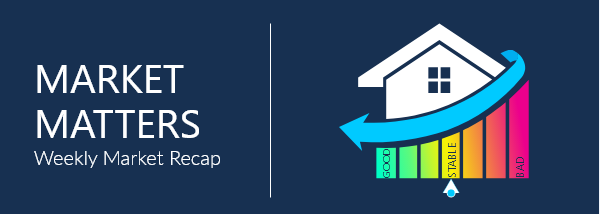Market Matters

This was a pretty quiet week data wise. The biggest piece of data was the Fed minutes, where the Fed appears to be ready to start to allow assets to runoff its balance sheet. The proposed amount in the minutes was $60 billion in U.S. Treasuries and $35 billion in MBS securities. Now that we have the Fed minutes, we are now in a waiting period until we get to the May 3rd and 4th Fed meeting. The question is will we continue to see the bearishness in the rates market that we have seen so far this year.
 Initial Jobless Claims
Initial Jobless Claims
Initial Jobless Claims for the week ending April 2nd fell -5k to 166k, hitting the lowest level since 1968. Initial filings continue to grind lower, down in six of the past seven weeks, as the labor market continues to tighten. Continuing claims, which lag by a week, rose 17k to 1.52mln for the week ending March 25th. They are now up 191k over the past two weekly reports after hitting their lowest level since 1970. In a note accompanying the release, the BLS noted that they are now reverting to their pre-pandemic seasonal adjustment methodology. The seasonal adjustment factor has historically been multiplicative but was reasonably changed during the pandemic to be additive.
 Mortgage Applications
Mortgage Applications
The MBA weekly mortgage applications index declined by -6.3% for the week ending April 1st. Purchase applications decreased by -3.0% and were -9.0% lower than the same week last year. Refinance applications declined by -10.0% and were -62.0% lower vs. the same week a year ago. "Mortgage application volume continues to decline due to rapidly rising mortgage rates, as financial markets expect significantly tighter monetary policy in the coming months. The 30-year fixed mortgage rate increased for the fourth consecutive week to 4.90 percent and is now more than 1.5 percentage points higher than a year ago. As higher rates reduce the incentive to refinance, application volume dropped to its lowest level since the spring of 2019. The refinance share of all applications dipped to 38.8 percent, down from 51 percent a year ago," said Joel Kan, MBA's Associate Vice President of Economic and Industry Forecasting. "The hot job market and rapid wage growth continue to support housing demand, despite the surge in rates and swift home-price appreciation. However, insufficient for-sale inventory is restraining purchase activity. Additionally, the elevated average purchase loan size, and steeper 8 percent drop in FHA purchase applications, are both indicative of first-time buyers being disproportionately impacted by supply and affordability challenges."
 ISM Services PMI
ISM Services PMI
The ISM Services PMI rose 1.8 points to 58.3 from a prior 56.5. Among the headline's components, the business activity index rose only from 55.1 to 55.5 (second lowest since May 2020); new orders rose 4.0 to 60.1 (second lowest since February 2021); and employment bounced back 5.5 to 54.0 (three-month high). The only one to decline was the supplier delivery time index, down -2.8 to 63.4 and the lowest in a year. Unfortunately, that doesn't seem to have been reflected in input price pressures, as the prices index rose .7 to 83.8, only a tenth point under December's record high.
 Trade Balance
Trade Balance
Imports and exports both rose a similar amount in February keeping the monthly trade deficit unchanged at $89.2bln. The trailing 12-month trade deficit climbed to $907bln, which is now the largest on record. In February, the exports were $228.6bln, a $4.1bln increase from January's exports (1.8% MoM, 19.9% YoY). Imports also increased by the same amount as exports ($4.1bln from January) to $317.8bln, bringing an overall 1.3% MoM and 23.1% YoY change. The decrease in goods by -1.0% to a deficit of $107.5bln, while services decreased by -5.6% with a remaining surplus of $18.3bln.

